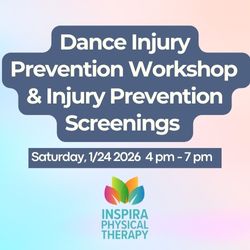Testimony to Committee on Cultural Affairs, Libraries and International Intergroup Relations
Tuesday, March 9, 2021
Testimony to Committee on Cultural Affairs, Libraries and International Intergroup Relations
On behalf of Dance/NYC (www.dance.nyc), a service organization that serves over 5,000 individual dance artists, 1,200 dance-making entities, and 500 non-profit dance companies and the many for profit dance businesses based in the metropolitan New York City area, including BIPOC (Black, Indigenous, and Peoples of Color) dance workers, immigrants, and disabled dance workers. Dance/NYC joins colleague advocates working across creative disciplines in thanking the Committee for your leadership during this time and in requesting the City:
- To maintain the budget for arts and culture without making any budget cuts.
- To acknowledge that cultural funding is only a small part of the City’s budget and that now is not the time to make budget cuts to the arts and culture sector;
- To affirm that artists are necessary workers that deserve living wages and that arts and culture leads economic recovery and is essential to bringing tourists back to our City;
- To provide necessary funding in order for dance organizations to continue working with our communities especially our children, the aging population, improving mental health during the pandemic and more;
- To create and fund initiatives for arts organizations that are BIPOC, disabled and immigrant led and serve our BIPOC, disabled and immigrant communities.
Arts and culture sector is the number one driver of tourism to the state, generating $110 billion in economic activity according to the Comptroller’s Report on the Creative Economy. Of that economic activity, NYC’s nonprofit dance sector contributes approximately $300 million yearly. This figure is largely understated as it only includes organizations with 501(c)(3) status indicating that the actual contribution is much larger with the inclusion of fiscally sponsored organizations, for profit dance studios and individual artists. Since the arrival of the COVID-19 pandemic last March, dance businesses had to close their doors drastically reducing their earned revenue and been forced to pivot to on-line programming for only a fraction of the revenue typically collected from in-person programming, with some earning no revenue at all from these activities.
In order to maintain social distancing and public health guidelines, arts and culture was forced to close with 95% of organizations cancelling their programs, 88% modifying the delivery of their programs, and 11% not providing products or services to their communities, according to SMU Data Arts and the New York City Department of Cultural Affairs’ COVID-19 Impact on Nonprofit Arts and Culture in New York City. Dance and cultural businesses are among the last to reopen with many still not allowed to reopen, an entire year later with an inability to generate income. As a result, there is an urgent need and opportunity for comprehensive funding to allow the arts and culture sector to serve our communities, increase tourism and to be leaders in economic recovery. Americans for the Arts published that attendees at nonprofit arts events spend $31.47 per person, per event, beyond the cost of admission, demonstrating that the arts generate income for the surrounding businesses. Our sector drives tourism generating income for other sectors such as restaurants, parking and transportation. The fate of NYC depends on the health of its arts and culture sector.
The Center for Urban Future reports that NYC’s small and mid-sized arts organizations project steep revenue losses—from 17 percent to 50 percent or more of their annual operating budgets. Dance/NYC has undertaken comprehensive research through our Coronavirus Dance Impact Study (www.dance.nyc/covid-19/Impact-Survey/Overview), including quantitative and qualitative data on the impact this moment is having on the dance sector, more specifically on organizations and individual dance workers. Dance organizations, groups and project budgets contracted by nearly one-third (31%) during the pandemic due to earned and contributed revenue losses. The smallest organizations are most impacted, with budgets contracting by at least 50%. The funding allocated to arts and culture allows the workforce to be paid living wages. Arts and culture is a small percentage of the City’s budget and cuts would be devastating to the workforce.
The Comptroller’s Report on the Creative Economy highlights the vastness of the cultural sector with nearly 400,000 jobs. This is an important workforce in our City. Dance/NYC’s Coronavirus Dance Impact Survey has documented that the COVID-19 pandemic is changing the size and make-up of the field with 5% of respondents permanently relocating outside of the City and an additional 17% considering relocation. Moreover, 43% of the respondents are considering long term career options outside of the field. Nearly half (47%) of the organizations surveyed are not certain that their organizations will be able to survive the pandemic and may be faced with closure. SMU DataArts and Department of Cultural Affairs’ COVID-19 Impact on Nonprofit Arts and Culture in New York City report recently estimated an aggregate -$6.8 billion net effect of the COVID-19 crisis on the nonprofit arts and culture sector equates to a deficit equivalent to 26% of expenses for the average organization, over the course of a year. The exodus of the dance workforce and the permanent closures of organizations and groups poses a direct and pervasive threat to the survival of the arts and culture communities across the State— a loss we simply cannot afford.
During this pandemic, it has been made evident that artists are necessary workers, as dance businesses and workers have remained active providing online dance classes, digital performances, developing and providing mental health support, providing recovery and mutual aid support to their neighborhoods. This is in addition to making countermeasures to ensure the ongoing payment and care of their staffs, while experiencing steep revenue drops. The arts are necessary for community building and mental health, both of which are largely at risk due to social distancing measures. According to SMU Data Arts and DCLA, community-based arts organizations (especially those that focus on cultural and ethinic awareness, folk arts, and community celebrations) in the City have reported losses of 12%, unanticipated expenses of 12%, and have lowest level of Working Capital relative to expenses. In Dance/NYC’s Coronavirus Dance Impact Survey, one organization shared, “We're deeply concerned with the health crisis (physical and mental), loss of jobs and food security for people living in our community who were already vulnerable before COVID-19. Our programs have always served as a place of solace as the arts offer spaces for people to heal and seek solutions. It is important that we exist to help people weather the crisis psychologically and compliment organizations who are offering social services for displacement, health care and food.” The Social Impact of the Arts Project from the University of Pennsylvania reports neighborhoods with cultural assets show better outcomes for education, aging, crime, health, and community well being. This finding is similar to the World Health Organization’s scoping review highlighting the range of research demonstrating the health and mental benefits of participating in arts programming. New Yorkers need the arts more than ever and can not afford a budget cut.
While COVID19 has engendered a multi-system collapse across the country, it has further exacerbated what was already a fragile ecosystem for the dance community, characterized by little to no unionization, poor wage standards and protections, and little to no access to healthcare. These conditions coupled with the financial losses related to the pandemic are particularly acute and disproportionately impacting dance workers and organizations who identify as or are led by disabled; BIPOC; and genderqueer/nonbinary as well as older dance workers and immigrant dance workers, particularly those based in the most under-resourced neighborhoods fo the City. NYC cannot afford to lose these cultural organizations that have existed for decades as a part of the arts and culture ecosystem and needs to provide funding to ensure their survival.
Dance/NYC strongly advocates for a vision rooted in inclusivity, equity, and sustainability for the arts and culture industry. Artists are necessary workers and in order to continue to be a driving part of the NYC workforce, City budget and funding are needed so that arts and culture can continue to thrive in a City known for its arts and culture.
- For Dance/NYC and its constituents, the most urgent priorities are for the City:
- To maintain the budget for arts and culture without making any budget cuts;
- To acknowledge that cultural funding is only a small part of the City’s budget and that now is not the time to make budget cuts to the arts and culture sector;
- To affirm that artists are necessary workers that deserve living wages and that arts and culture leads economic recovery and is essential to bringing tourists back to our City;
- To provide necessary funding in order for dance organizations to continue working with our communities especially our children, the aging population, improving mental health during the pandemic and more;
- To create and fund initiatives for arts organizations that are BIPOC, disabled and immigrant led and serve our BIPOC, disabled and immigrant communities.
We commend New York City’s ongoing efforts to slow the spread of COVID-19, while safely reopening the City. The arts have been among the last to reopen and are critical to rebuilding the City. The arts can afford to have the budget cut given the devastating effects already endured to the pandemic. We thank the City Council members for their time and efforts in reopening the arts and cultural sector to bring dance to all New Yorkers.
##



